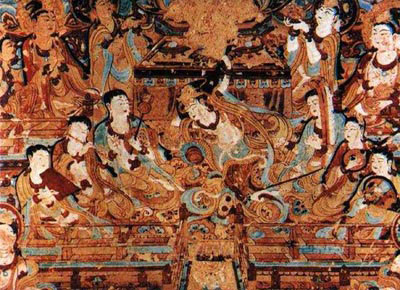Dunhuang Frescoes enter the Digital Age
Updated: 2007-05-31 14:26
 Caretakers are turning to computers to save the
frescoes of China's Dunhuang caves on the ancient Silk Road from half a million
tourists a year, the Bloomberg reported.
Caretakers are turning to computers to save the
frescoes of China's Dunhuang caves on the ancient Silk Road from half a million
tourists a year, the Bloomberg reported.
Officials will scan 45,000 square meters (54,000 square yards) of frescoes, or about the area of 10 football fields, and 3,390 Buddhist statues. The images will form a virtual-reality tour for visitors to see before they enter the grottoes. The project, a collaboration with the Mellon Institute in Pittsburgh, may take five years to record the first 20 of 492 caves, said Fan Jinshi, director of the Dunhuang Research Institute.
"Because tourists must use flashlights when they enter the grottoes, they get vague impressions of what they see,'' Fan said. "The digital displays give them a better-informed tour and save them the trek to caves they're not interested in.''
Reducing the time visitors spend inside the caves helps cut the levels of carbon dioxide and moisture, emissions that break down the delicate dye-on-plaster of the murals and statues.
Dunhuang was a trade hub on the Silk Road during the Sui Dynasty (581-618) and Tang Dynasty (618-907), when caravans bearing Chinese tea and silk for Persia and Europe stopped at its oases. The area was also a religious center, where the aesthetics of Buddhism, Islam, Tibetan sects, Sogdian and Tangut cultures were displayed in clay sculptures and cave murals.
Construction of the caves began in the fourth century by a monk called Yuezun
and continued until the 14th century. The earliest of Dunhuang's grottoes at
Mogao date to the Northern Liang period (366-439). One of the largest caves
features a 26- meter (85-feet) sitting Buddha made during the Tang Dynasty.
| 1 | 2 |  |

